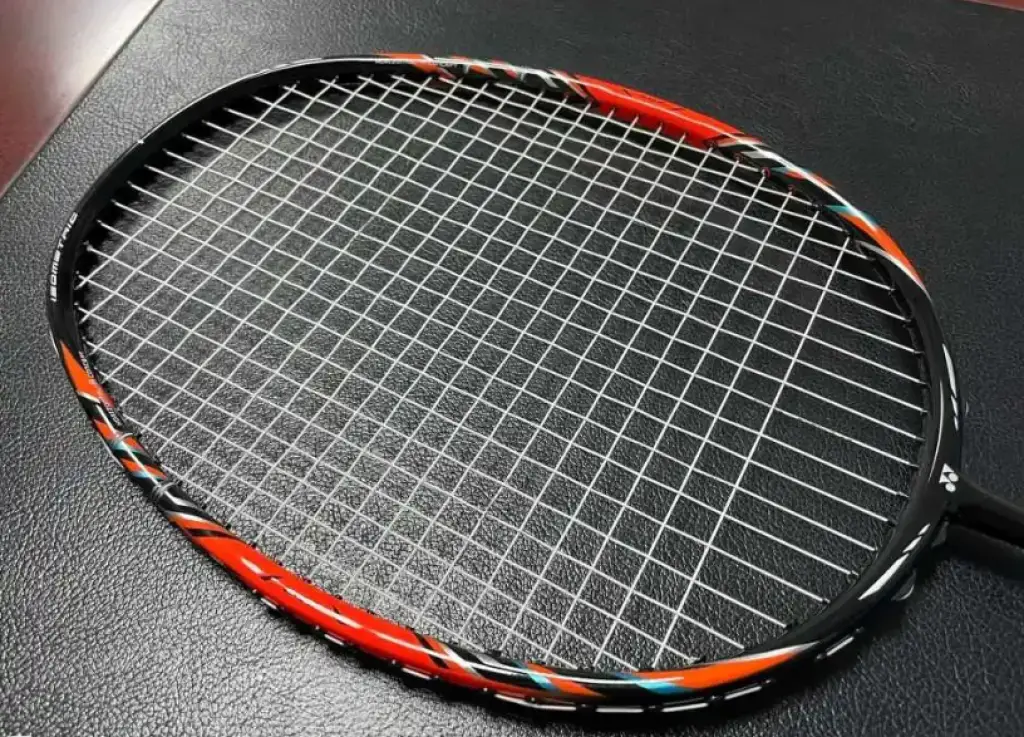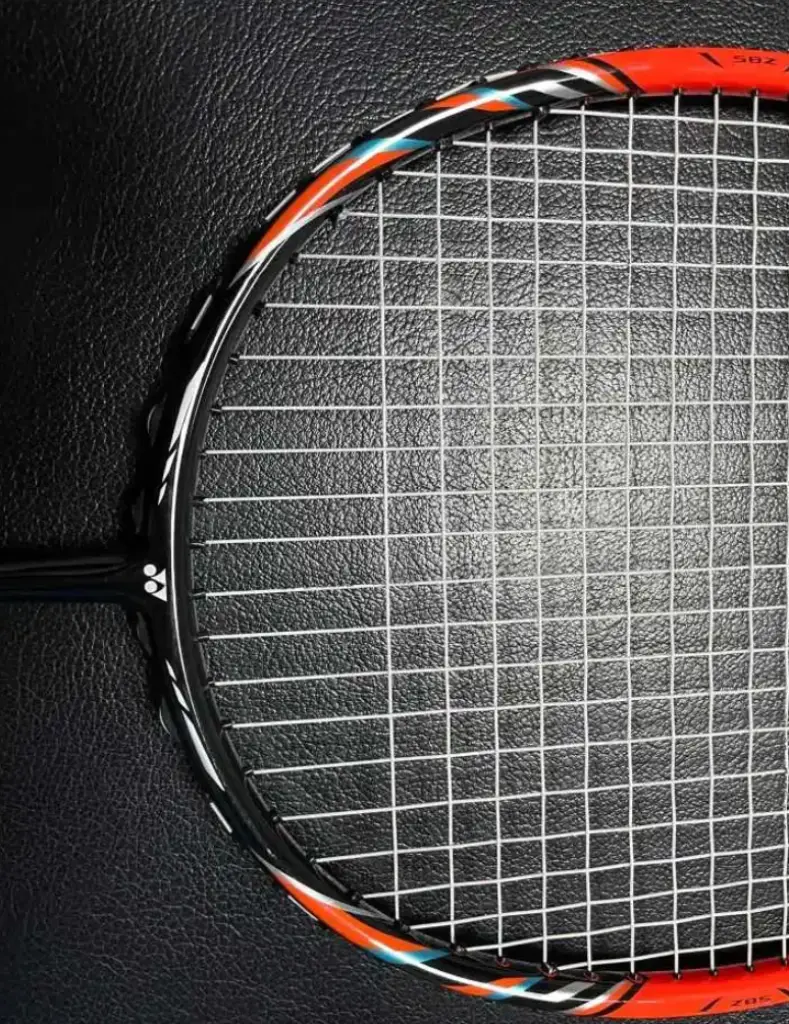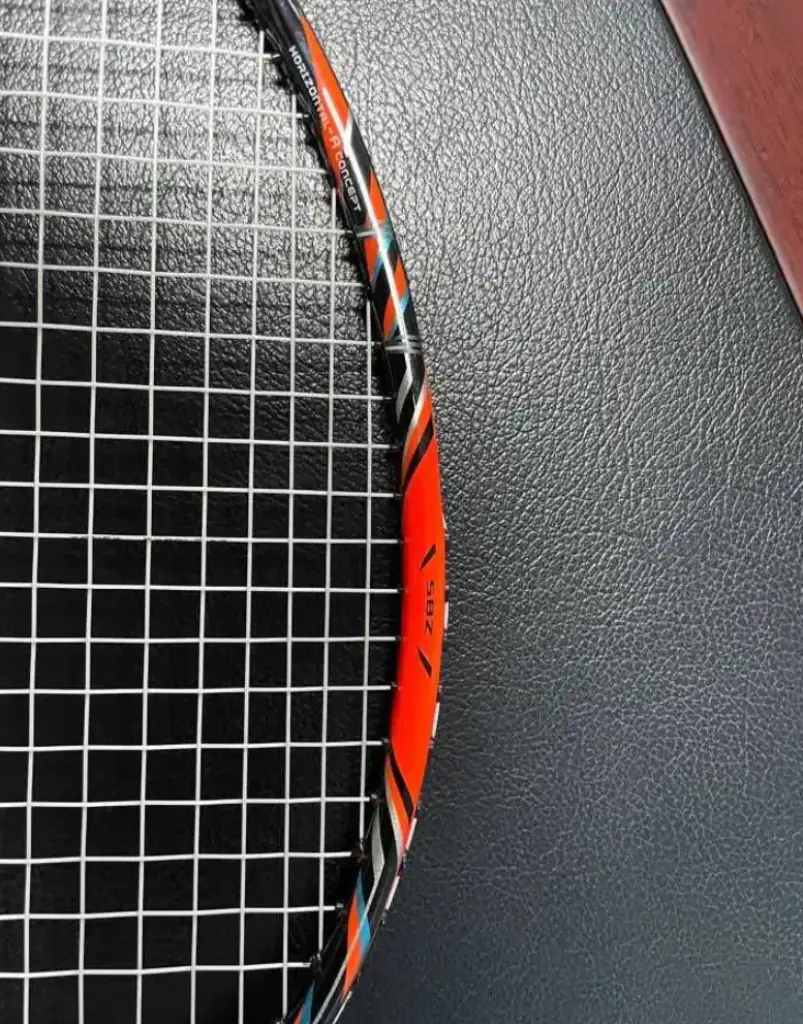I wanted to write about other rackets first, because other rackets have been used recently, and the impression is still relatively fresh. But when I think back, no, I still have 5-7 holes in my previously borrowed friend’s racket that I haven’t filled, so I’ll just have to finish it first.
But unfortunately, as the sugar-water version of the Zsp isp, during the trial period did not impress me because of particularly good performance or particularly good on the hands, and no wonder I more or less wasted a bit of brain in the organization of this text.
I don’t blame it on that, it’s just that I’ve already experienced the more extreme version, and I’ve tasted it for all it’s worth.

Parameters: 3UG5, de-bottomed, total weight in used condition 92.6g, balance point 296mm, center bar length 220mm, moderately stiff tuning, fluid boxed small racket frame, 9-3 point cable slot, 24lb warranty, 25-27lbs of drawstring xb63.
Obviously, this is a youth version of the zsp, and the look and name already strongly confirm that. Color scheme wise, the isp has the same red and black design scheme as the old zsp. Apart from the different application of technology and frame pattern details, it’s not really easy to recognize the difference between the two from a distance for a while. Of course, it is also the lack of certain details, resulting in the isp really not as dominant and durable as zsp, but also more than a little cheap feeling.
But after seriously studying the technology on the reduction of the isp, can let me re-recognize zsp. Visible differences are mainly two, are concentrated in the racket frame. One is that the three rows of horizontal lines are arranged closer to the center of the frame than the zsp, relatively shifted down and making the top 1/3 of the sweet spot line bed less dense than the latter, but the sweet spot area is expected to be a little larger. Secondly, the SBZ in the middle of the frame is not made of EX-HMG material, and after checking the official website, I learned that the function of the SBZ is to narrow the frame, so that the narrowing place becomes a bending point and the elasticity of the frame after folding is used when hitting the ball. Especially the second point, although the three everyone has to promote the technology of frame bending, but this time I was kind of eye-opening, re-touch zsp / isp racket frame, only to find that the 9, 3 points do have a concave.

I hadn’t tried the old zsp when I tried the isp, so when I compared it to the new zsp, I could immediately see that it was a faster and lighter balanced racket. The balance point is not too high, and the swing speed is on the threshold of a speed racket, which is more flexible but at the same time retains a good solid feel. While warming up to the racquet, it was also noticeable that the isp had a better feel, and as a small-frame racquet, it didn’t require a lot of power, and the reason for this was the softer tuning. The reason for this is the softer tuning. The softness here is not only in the center stick, but also in the frame, as evidenced by the material of the frame and the number of pounds of warranty. A friend with string pulling skills had warned me that I couldn’t go too high on the poundage with this racket, and that the isp’s frame would come in softer, with higher pounds coming at a higher risk.
As a result, the isp has become one of the smallest frames I’ve experienced so far, with a more pronounced ball-holding feel and the lowest threshold for use. At least for players who have already learned the correct swing position, handling active overhand shots with the isp can be said to be no extra difficulty.
In my opinion, the lowered threshold also diminishes the crisp, bouncy poly feel of the small racket frame itself. This softer tuning can be felt as an unexpected unloading sensation when the author tries to hit an offensive drop shot at full power. It is true that thanks to the good elasticity of the center stick and the high bed tension of the horizontal line tube, the power of the ball is still quite good when hitting the sweet spot, but the feedback from the ball is not as good, compared to zsp/dzs/zf2, it seems that there is an extra layer of windowpaper in the transfer of power, and it does not have a good clarity. This makes me less violent or precise when attacking the back of the court in doubles, whether it’s a heavy kill or pulling the opponent’s defense apart by hitting the point.
However, as a good product of the nr series, the 3u’s isp is still able to achieve good consistent offense performance with its high swing speed and low swing weight.

Generally speaking, the increased ball retention helps to control the small balls at the net, but the isp does not have an advantage over the zsp in the backcourt or in the small balls near the net. The re-sizing of the sweet spot in the stringbed is a secondary concern compared to the decrease in forgiveness that comes with a smaller frame.
About a year ago this racket had a price point of 499, and at that price point acquiring a green factory, mid-range, flagship racket that is friendly and easy on the hands is certainly a cost-effective option. It started out cold, but a couple of reviews early in the year may have driven sales of this cold option, and it’s likely to have ridden the Big Three’s pricing strategy to produce about a hundred percent increase recently, at which point it may be time to weigh in again.

For me, the current one doesn’t give me as much pleasure as some of the racquets in some of the smaller frame series from some of the second-tier brands, let alone the zsp, and it’s hard to get my heart going again.
Thanks for the racket and pics from a friend.

Leave a Reply